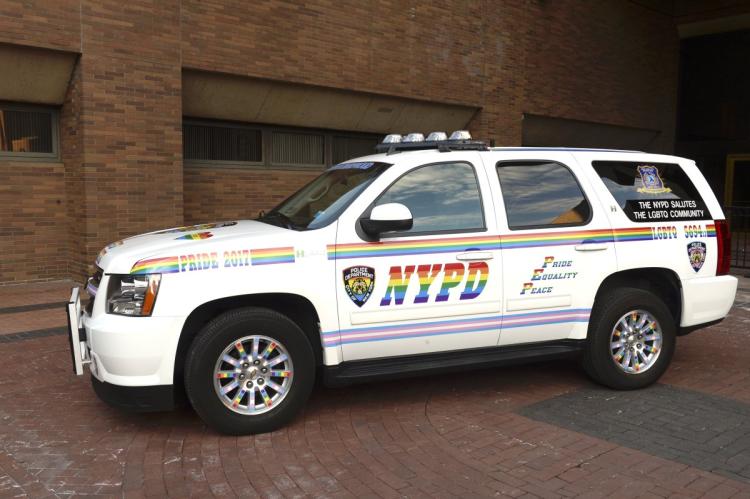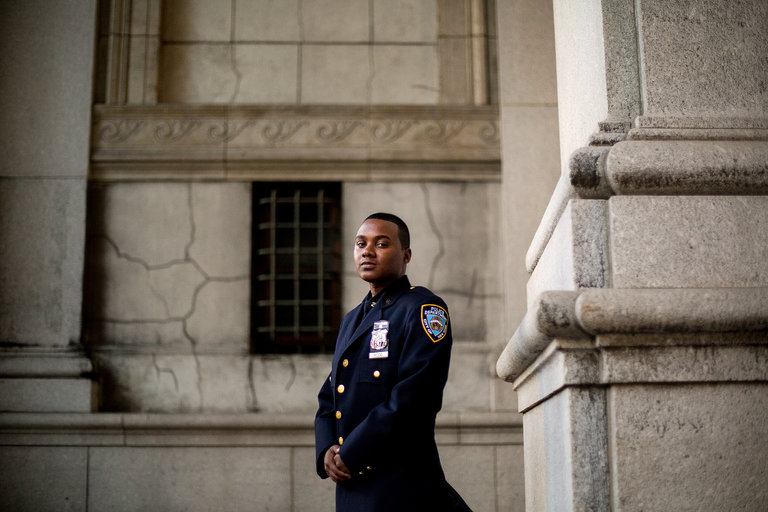Imagine finally figuring out who you were and working in a job you always dreamed of having, sounds great right? Now, this career that you always wanted excites and fulfills you in every way, you’re highly successful, and admired by your peers. Little do your coworkers know, you have a secret, and you’re always fearful that if anyone you work with discovered this secret, it could all be over. This is what it is like to be a closeted gay, lesbian, bisexual, or transgender member of law enforcement. Now imagine you just came out at work or are thinking about coming out and living openly but you don’t know what resources are available to you. You are afraid of backlash, resentment, differential treatment, etc. This section of my archive is dedicated to supporting those who identify as LGBT members of law enforcement and their straight allies. It is my intent that the information listed below be practical for those who are out, those who are not out, and those who are friends, coworkers, partners, and loved ones of LGBT law enforcement personnel. Furthermore, I hope these resources listed below are of help to anyone who should find them and need them regardless of their occupation or identity. This guide is also intended for the LGBT community to become aware of the resources out there for them as well as the many LGBT police groups that are there willing to support and protect them and bridge the gap created back at Stonewall.
1.Gay Officers Action League
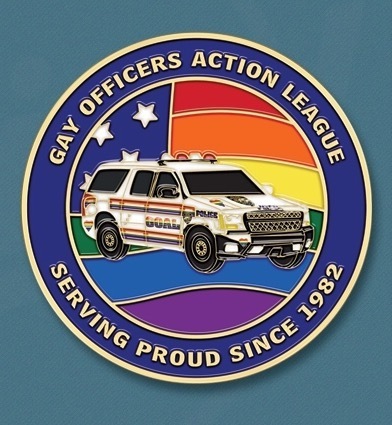 The Gay Officers Action League (GOAL) was formed in 1982 in New York to address the needs, issues, and concerns of gay and lesbian law enforcement personnel. Since it’s beginning GOAL New York has advocated for the rights of its members and has assisted them on matters of discrimination, harassment, and disparate treatment in the workplace. GOAL is committed to educating and training police personnel in order to promote a positive relationship between the police and LGBT communities. On GOALs website, you will find links to different chapters as well as news and events happening with GOAL. This is a valuable resource for LGBT police officers in order to network and find a local chapter. This resource is also incredibly valuable to the LGBT community so that LGBT people can see the officers and get to know the officers that represent them and serve their community.
The Gay Officers Action League (GOAL) was formed in 1982 in New York to address the needs, issues, and concerns of gay and lesbian law enforcement personnel. Since it’s beginning GOAL New York has advocated for the rights of its members and has assisted them on matters of discrimination, harassment, and disparate treatment in the workplace. GOAL is committed to educating and training police personnel in order to promote a positive relationship between the police and LGBT communities. On GOALs website, you will find links to different chapters as well as news and events happening with GOAL. This is a valuable resource for LGBT police officers in order to network and find a local chapter. This resource is also incredibly valuable to the LGBT community so that LGBT people can see the officers and get to know the officers that represent them and serve their community.
2. Out To Protect
Out To Protect is an organization that was created to spread awareness of the gay, lesbian, bisexual, and transgender professionals currently working in law enforcement, out or not. This organization provides scholarships to LGBT recruits to be able to afford equipment or in some cases tuition to attend a police academy. Out To Protect also provides grants to law enforcement agencies who otherwise wouldn’t be able to afford the funding to create and maintain LGBT training amongst their recruits and officers. This is such an amazing resource for LGBT people and future recruits to be able to be awarded scholarships to help them reach their goals of become officers to increase visibility and become role models within the community. This also is an extremely valuable resource for officers to bring training to their departments if they don’t have it. With the grants provided by Out To Protect there is literally no reason a department couldn’t have LGBT sensitivity training and awareness.
3. Coming Out From Behind The Badge
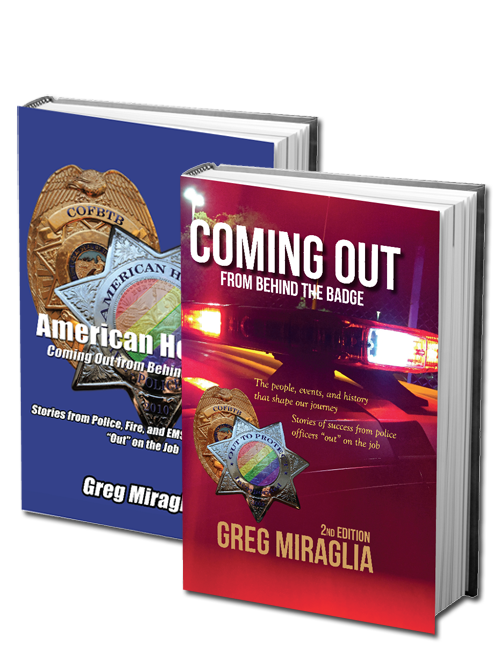 Coming Out From Behind The Badge is an organization that provides resources as an education initiative to create a better awareness of LGBT professionals in law enforcement. Resources provided by this organization are a series of books as well as contacts of many LGBT organizations and what they do. This organization is such an amazing resource for police officers who identify as LGBT, whether they have come out or are not, to feel included, loved, respected, and supported. The above organization has a collection of books that provide stories and personal accounts from officers all over the nation who are out and successful. These officers shared their stories so that those who are uncomfortable or those who fear coming out can have the courage and support to come out themselves. Most states still do not have any protection for LGBT persons in the workplace so an organization like this is vital to protecting your career and having the resources needed and support if an officer did face discrimination based on being LGBT.
Coming Out From Behind The Badge is an organization that provides resources as an education initiative to create a better awareness of LGBT professionals in law enforcement. Resources provided by this organization are a series of books as well as contacts of many LGBT organizations and what they do. This organization is such an amazing resource for police officers who identify as LGBT, whether they have come out or are not, to feel included, loved, respected, and supported. The above organization has a collection of books that provide stories and personal accounts from officers all over the nation who are out and successful. These officers shared their stories so that those who are uncomfortable or those who fear coming out can have the courage and support to come out themselves. Most states still do not have any protection for LGBT persons in the workplace so an organization like this is vital to protecting your career and having the resources needed and support if an officer did face discrimination based on being LGBT.
http://www.comingoutfrombehindthebadge.com/
4. TCOPS, Transgender Community of Police and Sheriffs
 TCOPS is an organization that was created to support and provide a network for transgendered law enforcement officers. TCOPS membership consist of patrol officers, deputies, federal officers, detectives, correctional officers, parole agents, probation officers, constables, rangers, parks police, police officers, deputy sheriffs, state special agents, federal special agents, special police officers, reserve officers, district attorney investigators, forensic scientists, crime scene technicians, military law enforcement personnel, corrections officers & CID officers, community service officers, college, campus, and school police officers, latent fingerprint examiners, and other support staff, and retired officers. This type of organization is incredibly important for transgender personnel working in law enforcement because not only do they receive peer support and guidance, TCOPS helps officers deal with issues such as name changes on credentials and employment documents, the employee’s presentation and appearance at work both prior to, during, and after a transition, grooming standards, concerns of co-workers, restroom access, and locker room accommodations. Specific policies, guidelines, or practices may not be in place in certain departments and TCOPS offers a network and support in helping officers and departments develop such guidelines and policies.
TCOPS is an organization that was created to support and provide a network for transgendered law enforcement officers. TCOPS membership consist of patrol officers, deputies, federal officers, detectives, correctional officers, parole agents, probation officers, constables, rangers, parks police, police officers, deputy sheriffs, state special agents, federal special agents, special police officers, reserve officers, district attorney investigators, forensic scientists, crime scene technicians, military law enforcement personnel, corrections officers & CID officers, community service officers, college, campus, and school police officers, latent fingerprint examiners, and other support staff, and retired officers. This type of organization is incredibly important for transgender personnel working in law enforcement because not only do they receive peer support and guidance, TCOPS helps officers deal with issues such as name changes on credentials and employment documents, the employee’s presentation and appearance at work both prior to, during, and after a transition, grooming standards, concerns of co-workers, restroom access, and locker room accommodations. Specific policies, guidelines, or practices may not be in place in certain departments and TCOPS offers a network and support in helping officers and departments develop such guidelines and policies.
http://tcops-international.org/index.html
5. The Badge of Life
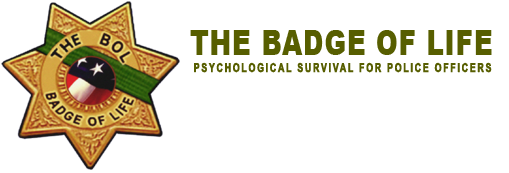 The Badge of Life is a nonprofit organization that supports and provides resources for police officers thinking of or affected by suicide. In 2016, 140 officers were killed in the line of duty. Although that number is staggering, statistics show that more law enforcement officers die by suicide than are killed in the line of duty. Each year there is on average a total of 130 police suicides. For every one police suicide, almost 1000 officers continue living and working while suffering from PTSD. When your profession lists strength and bravery as job requirements, there isn’t much space left for vulnerability. We work every day on our physical health, but we often forget that at the end of the day, our mental state is going to decide whether we win or lose each battle. So now on top of the normal stresses of police work add on living as an openly LGBT officer or even living closeted and feeling like you won’t be accepted and you can’t see the possibility of living as both an openly LGBT person and a police officer. Police officers and LGBT people are two of the most susceptible groups to suicide so this resource alone is one of the most important for LGBT police officers whose struggles and stresses make them twice as more vulnerable to suicide than the average police officer or the average LGBT identifying person.
The Badge of Life is a nonprofit organization that supports and provides resources for police officers thinking of or affected by suicide. In 2016, 140 officers were killed in the line of duty. Although that number is staggering, statistics show that more law enforcement officers die by suicide than are killed in the line of duty. Each year there is on average a total of 130 police suicides. For every one police suicide, almost 1000 officers continue living and working while suffering from PTSD. When your profession lists strength and bravery as job requirements, there isn’t much space left for vulnerability. We work every day on our physical health, but we often forget that at the end of the day, our mental state is going to decide whether we win or lose each battle. So now on top of the normal stresses of police work add on living as an openly LGBT officer or even living closeted and feeling like you won’t be accepted and you can’t see the possibility of living as both an openly LGBT person and a police officer. Police officers and LGBT people are two of the most susceptible groups to suicide so this resource alone is one of the most important for LGBT police officers whose struggles and stresses make them twice as more vulnerable to suicide than the average police officer or the average LGBT identifying person.
6. GLBT National Hotline
 The lesbian, gay, bisexual, and transgender national hotline is a nonprofit organization that provides support via telephone, online chat, or email. The hotline can provide individuals with local resources for every city and town across the United States. One of the most important features of this hotline is that the support is free and confidential. The hotline maintains the largest database of resources with over 15,000 listings. These resources range from support groups to sports leagues to LGBT friendly businesses. This organization is vital to all LGBT because they provide support, resources, and most importantly a listening ear. No matter what crisis you’re going through or what you’re struggling with this organization is there to help and ensure you that its ok to ask for help.
The lesbian, gay, bisexual, and transgender national hotline is a nonprofit organization that provides support via telephone, online chat, or email. The hotline can provide individuals with local resources for every city and town across the United States. One of the most important features of this hotline is that the support is free and confidential. The hotline maintains the largest database of resources with over 15,000 listings. These resources range from support groups to sports leagues to LGBT friendly businesses. This organization is vital to all LGBT because they provide support, resources, and most importantly a listening ear. No matter what crisis you’re going through or what you’re struggling with this organization is there to help and ensure you that its ok to ask for help.
http://www.glbthotline.org/



